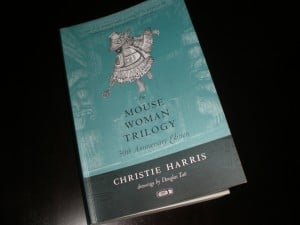I was introduced to Mouse Woman today, a cute and cheeky character found in stories from the Haida, one of the First Nations bands of the North West coast of Canada.
Mouse Woman is a shape changer, a narnauk, who lives and travels between the human and spirit worlds, helping and guiding young people in need by offering suggestions, options and alternatives.
Mouse Woman, or Grandmother, likes life to be balanced and works with humans and nature to equalise good and bad, right and wrong, and deal with the humans or spirits who had upset the order of the world.
As payment for her help, Mouse Woman loves wool, which her ravelly little fingers like to tear into a lovely, loose, nesty pile of wool.
The stories, written by Christie Harris, are refreshing, fun, mischievous, scary and thought provoking. I ‘m sure that I will be using the stories with my class. They will be great for discussing and exploring positive values, symbols and actions, and even ideas of natural balance, ecology and rights and responsibilities.
The stories also give a wonderful insight into traditional Haida life and beliefs – the descriptions of the forests, coasts and oceans are beautiful and poignant. The social structures and way of life in the Time Before are also shown and explained.
I’m so glad that I’ve met and fallen under the spell of Mouse Woman – and I hope she will join me back in my classroom to share her adventures with children on the other side of the world.


